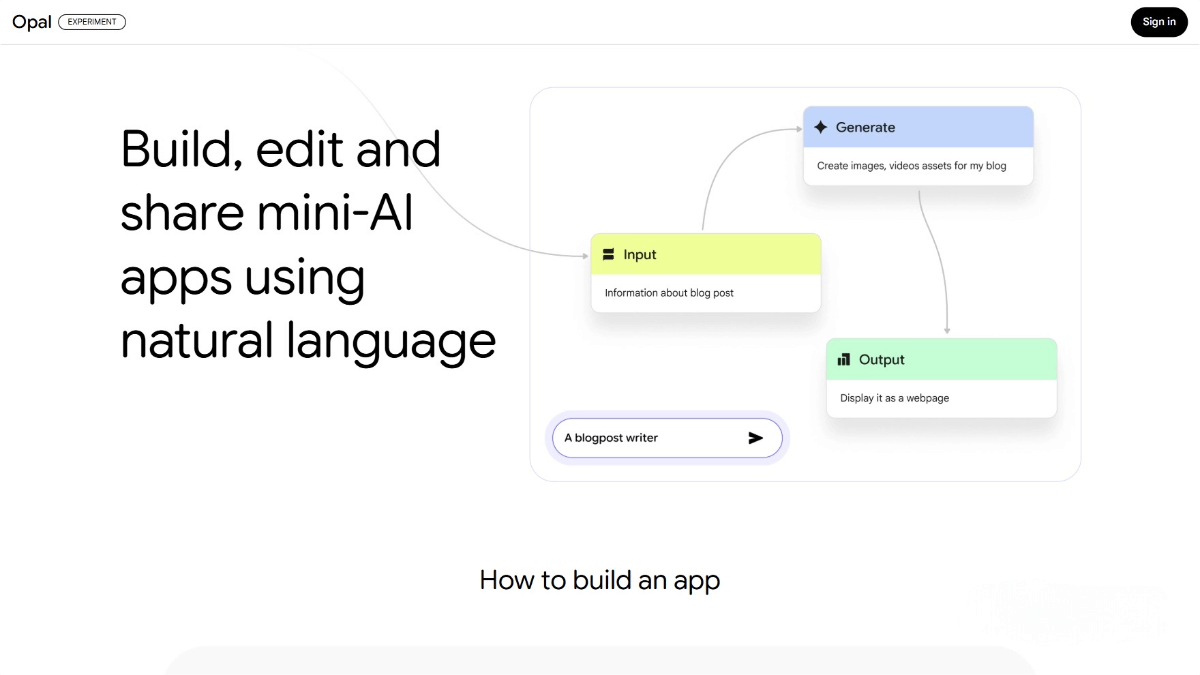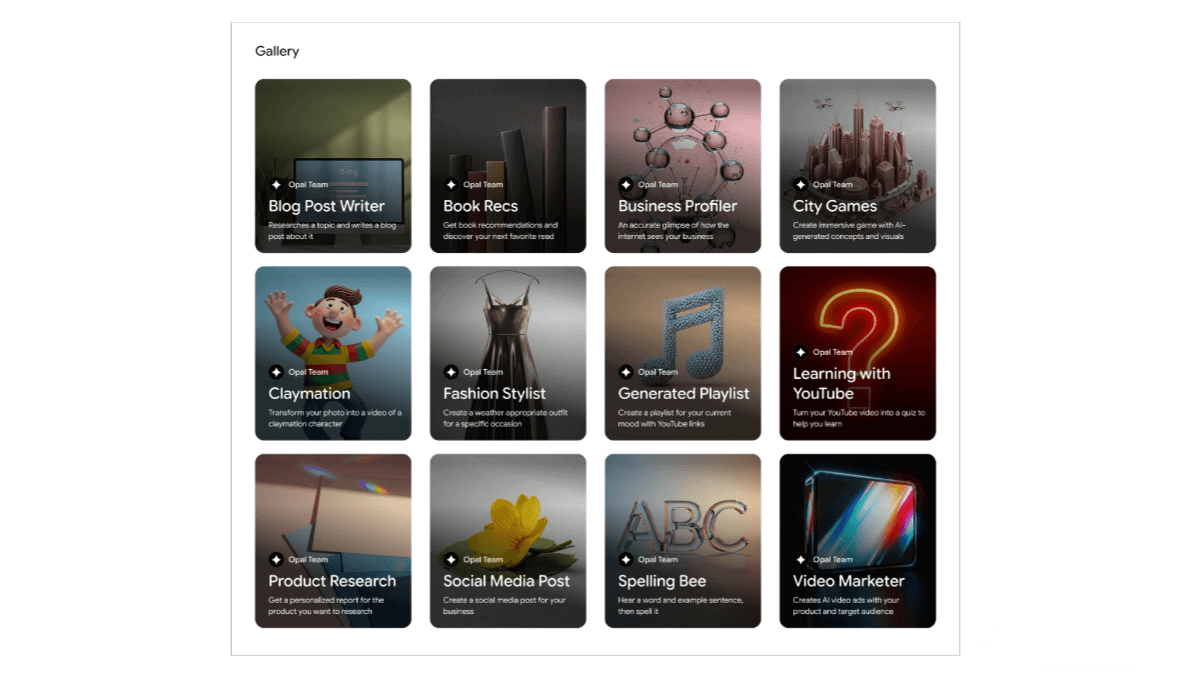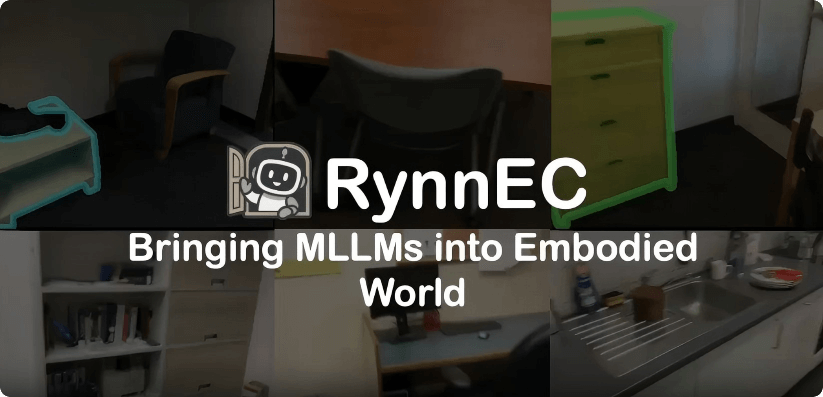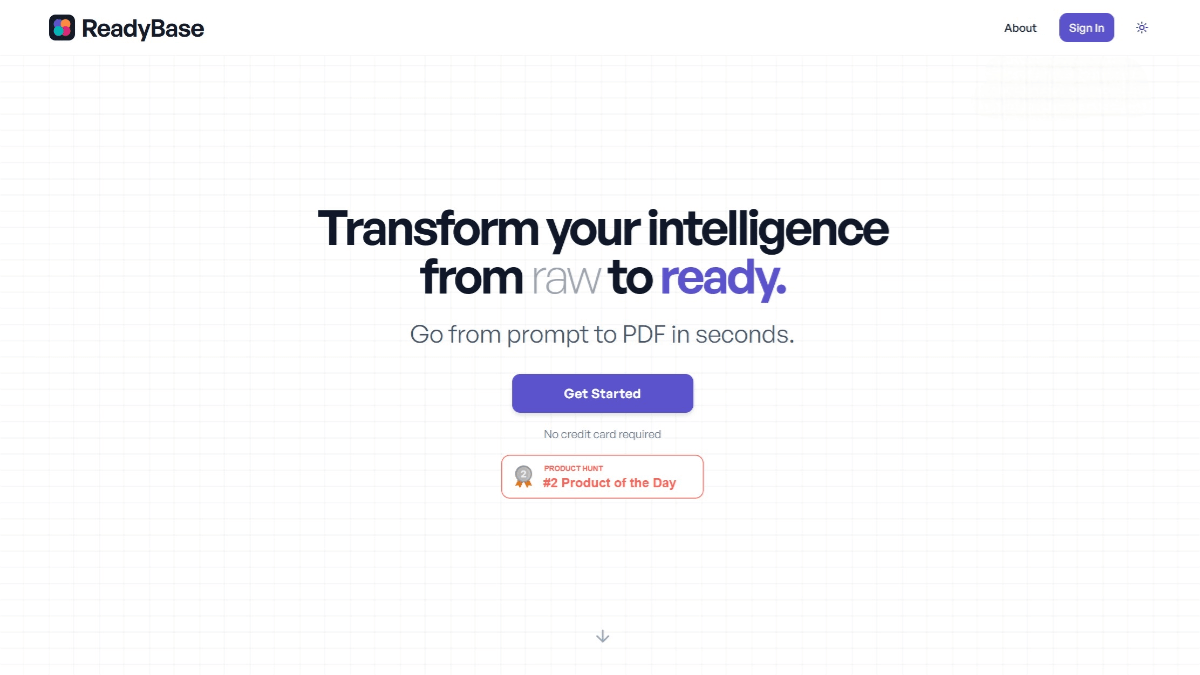What is Opal?
Opal is an experimental AI workflow generation tool launched by Google Labs. It enables users to quickly create and share lightweight AI applications using simple natural language and visual editing—without writing a single line of code. Opal allows users to chain together prompts, model calls, and tools to build multi-step AI workflows. With powerful editing features, users can refine and optimize their apps through natural language commands or the visual editor. Once complete, these apps can be shared with others for collaborative use. Currently, Opal is available only in the United States as a public test, aimed at accelerating AI prototyping and workflow development.

Key Features of Opal
-
Workflow Creation: Opal simplifies the complex process of building AI applications into a visual flowchart. Users describe the logic, and Opal connects prompts, model calls, and tools into a multi-step workflow.
-
Natural Language Editing: Users can modify workflows using plain language instructions—such as changing a prompt, adding a new step, or integrating a tool—without writing code.
-
Visual Editor: Opal provides an intuitive drag-and-drop interface that allows users to visually edit, rearrange, and refine their workflows for greater control.
-
Easy Sharing: Once an app is built, users can share it with others, who can run it using their own Google accounts—making collaboration seamless.
-
Template Library: Opal offers a collection of prebuilt templates to help users get started quickly, which can be customized to suit specific needs.

How to Use Opal
-
Visit the Official Website: Go to https://opal.withgoogle.com/. Note that Opal is currently only available in the United States, and regional access is required.
-
Sign Up and Log In: Follow the instructions to register and sign in with your Google account.
-
Choose a Template or Start from Scratch:
-
Use a Template: Browse Opal’s template library and pick one that fits your goal.
-
Create a New App: Start with a blank canvas if you already have a clear idea.
-
-
Describe the App Logic: Use natural language to describe how the app should work. Opal will automatically generate a visual workflow based on your description.
-
Edit and Refine Using Two Methods:
-
Natural Language Commands: For example, say “Change step 2’s prompt to ‘Answer in detail’.”
-
Visual Editor: Manually drag, add, or delete steps and adjust connections as needed.
-
-
Test the App: Run the app within Opal using sample input to verify that it works as expected.
-
Share Your App: Once satisfied, share the app link with others so they can use it with their Google accounts.
Use Cases for Opal
-
Content Creation: Automate the writing of articles, blog posts, or social media content to boost productivity.
-
Data Analysis: Extract key insights from large datasets and generate clear, digestible reports automatically.
-
Customer Service: Build intelligent chatbots to answer frequently asked questions and improve service efficiency.
-
Education & Learning: Create personalized learning plans and interactive lessons tailored to individual learner needs.
-
Project Management: Automate task assignment and progress tracking to help managers oversee projects more effectively.
Related Posts




